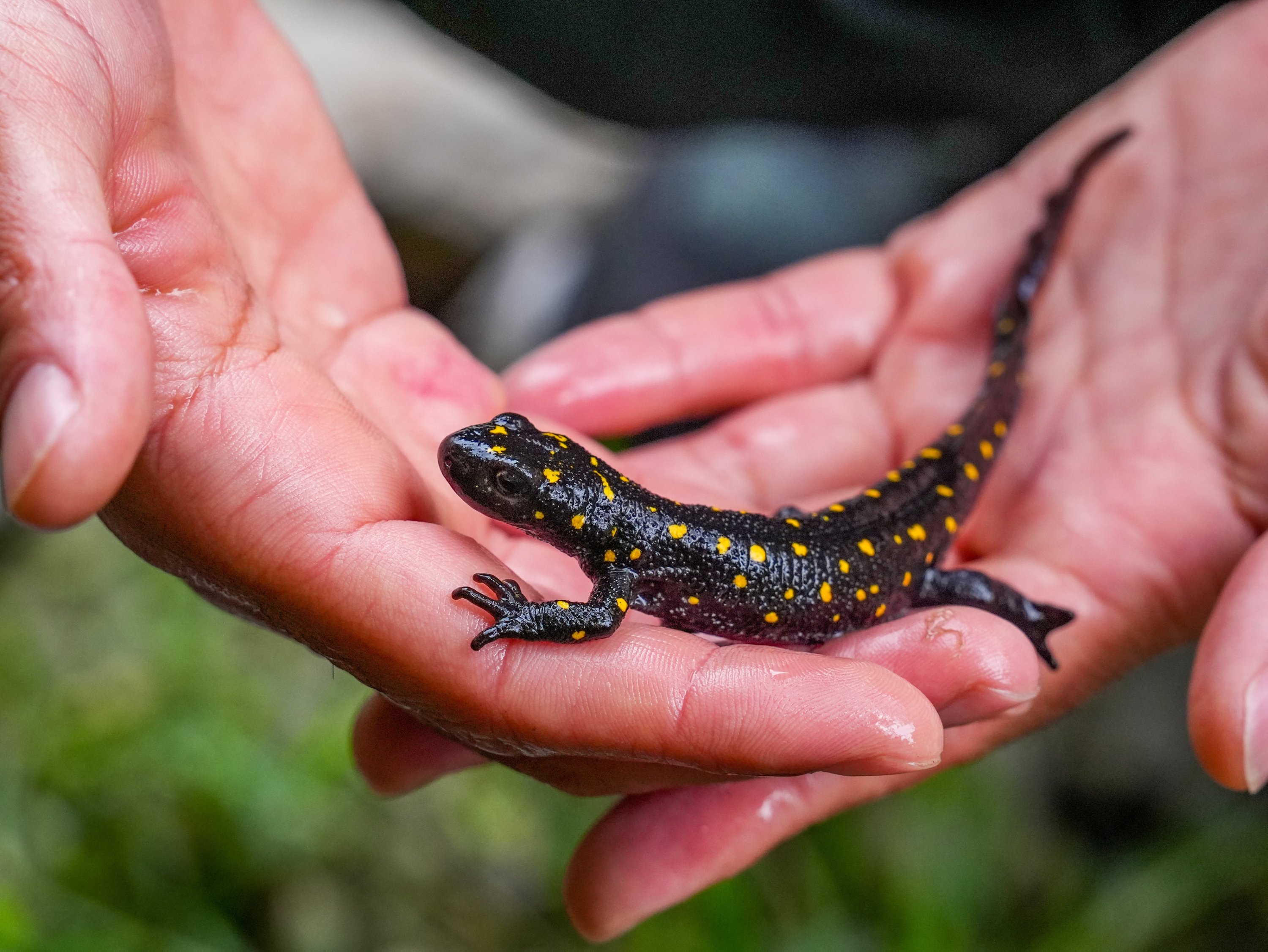© Turkuvaz Haberleşme ve Yayıncılık 2026
Endangered yellow-spotted salamanders are thriving in the Mediterranean climate on the shore of Karakaya Dam Lake in Türkiye's Diyarbakır's Çüngüş district.
The Anatolian yellow-spotted salamander, which was put on the protection list by the General Directorate of Nature Conservation and National Parks because it is under threat due to habitat loss, chose the clear and cool water in the neighborhood as its breeding and living space.
Spotted near the roadside of the Yıldız neighborhood, the yellow-spotted salamander is one of the priority species for conservation and has a diminishing existence status.

Responding to the seasonal conditions, perhaps the temperature or the flooding of their burrows, or even the sound of raindrops on the surface on the first warm nights of spring, the spotted salamanders start to emerge and begin a synchronized migration toward the vernal pools of their birth, sometimes passing by perfectly good breeding ponds on the way.
The salamanders stay at their natal pools long enough to mate and lay their eggs before returning home. The larvae remain in the ponds for several months, feeding on tiny invertebrates, until they trade their gills for lungs and grow legs that allow them to follow their parents on land.
By this time, the vernal pools have dried up, reverting back to unobtrusive hollows in the forest floor. It may take more than five years before a juvenile reaches sexual maturity, but spotted salamanders can live more than 30 years.
The population of spotted salamanders is listed as a “Special Concern Species” by the New York State Department of Environmental Conservation. One threat that these animals face is the destruction of their breeding ponds. Since vernal pools are shallow and dry most of the year, they are often filled in or built over by homeowners and developers.
Another problem is water pollution, to which salamanders are extremely sensitive. Heavy metals and pesticides are deadly, but acid rain and snow are bigger threats in the northeast. Salamander eggs and larvae either die or develop abnormally if the pH of their ponds is too low.
